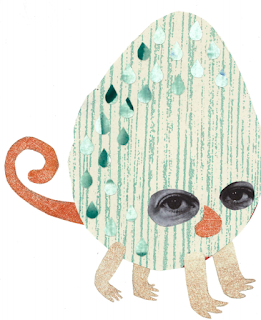Fanelli creates her creatures using collages made of many materials and contrasting images, making weird animals with unusual anatomy [1]. Using my sketchbook of drawings and Photoshop, I created some surreal creatures such as the three-headed deer from observational drawings of a ceramic figure in the Ashmolean Museum.
I also used an existing nonsense creature, a kind of bird thing, and overlaid some other museum drawings of roman coins and made it so the creature is looking into a Roman pot. By adding images with semiotic meaning, I have added more interest into the creature's design. This method of overlaying textures could be applied to create collaged work, such as Fanelli makes, but should be kept quite simple as the image may became too complicated and confusing.
Reference
[1] Fanelli 2002
Bibliography
Amazon. 2016. Mythological Monsters. [ONLINE] Available at: https://www.amazon.co.uk/d/Books/Mythological-Monsters-Sara-Fanelli/184428560X. [Accessed 9 December 2016].
Blogspot. 2014. The World of . . . Sara Fanelli. [ONLINE] Available at: http://rz100.blogspot.co.uk/2014/03/el-mundo-desara-fanelli-ii.html. [Accessed 9 December 2016].
Amazon. 2016. Mythological Monsters. [ONLINE] Available at: https://www.amazon.co.uk/d/Books/Mythological-Monsters-Sara-Fanelli/184428560X. [Accessed 9 December 2016].
Blogspot. 2014. The World of . . . Sara Fanelli. [ONLINE] Available at: http://rz100.blogspot.co.uk/2014/03/el-mundo-desara-fanelli-ii.html. [Accessed 9 December 2016].












